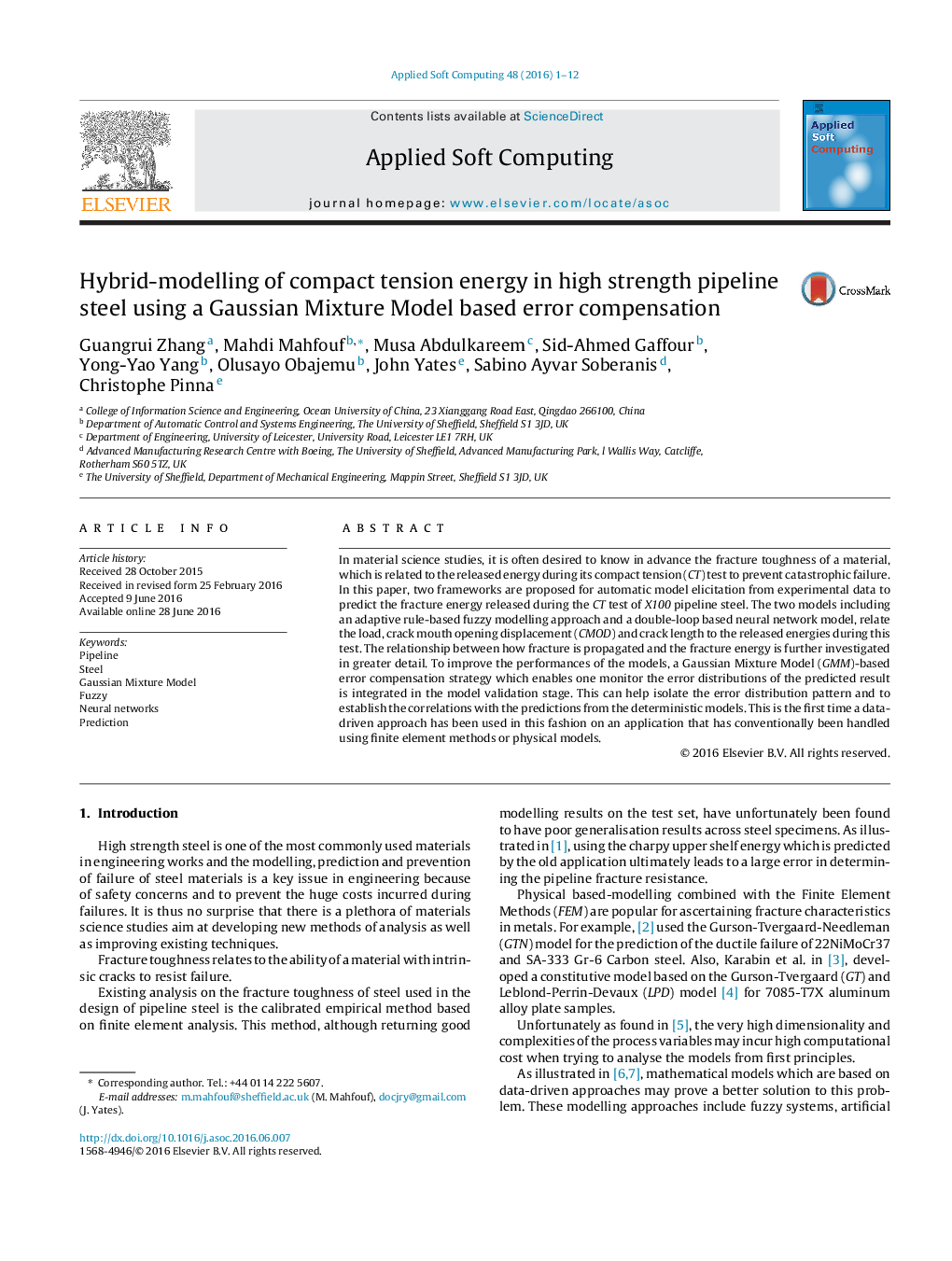| کد مقاله | کد نشریه | سال انتشار | مقاله انگلیسی | نسخه تمام متن |
|---|---|---|---|---|
| 494529 | 862799 | 2016 | 12 صفحه PDF | دانلود رایگان |
• The paper reports on results of two modelling techniques with error compensation used for the prediction of the flat fracture energy released during the compact tension test.
• The aim is to predict the prior fracture toughness of pipeline steel.
• The two modelling frameworks used are the adaptive fuzzy modelling and the back-propagation based double-loop neural networks.
• The elicited models were then tuned using a Gaussian Mixture Model-based error compensation scheme.
• The modelling framework is accurate and leads to a systematic elicitation of model confidence bands.
In material science studies, it is often desired to know in advance the fracture toughness of a material, which is related to the released energy during its compact tension (CT) test to prevent catastrophic failure. In this paper, two frameworks are proposed for automatic model elicitation from experimental data to predict the fracture energy released during the CT test of X100 pipeline steel. The two models including an adaptive rule-based fuzzy modelling approach and a double-loop based neural network model, relate the load, crack mouth opening displacement (CMOD) and crack length to the released energies during this test. The relationship between how fracture is propagated and the fracture energy is further investigated in greater detail. To improve the performances of the models, a Gaussian Mixture Model (GMM)-based error compensation strategy which enables one monitor the error distributions of the predicted result is integrated in the model validation stage. This can help isolate the error distribution pattern and to establish the correlations with the predictions from the deterministic models. This is the first time a data-driven approach has been used in this fashion on an application that has conventionally been handled using finite element methods or physical models.
Figure optionsDownload as PowerPoint slide
Journal: Applied Soft Computing - Volume 48, November 2016, Pages 1–12
